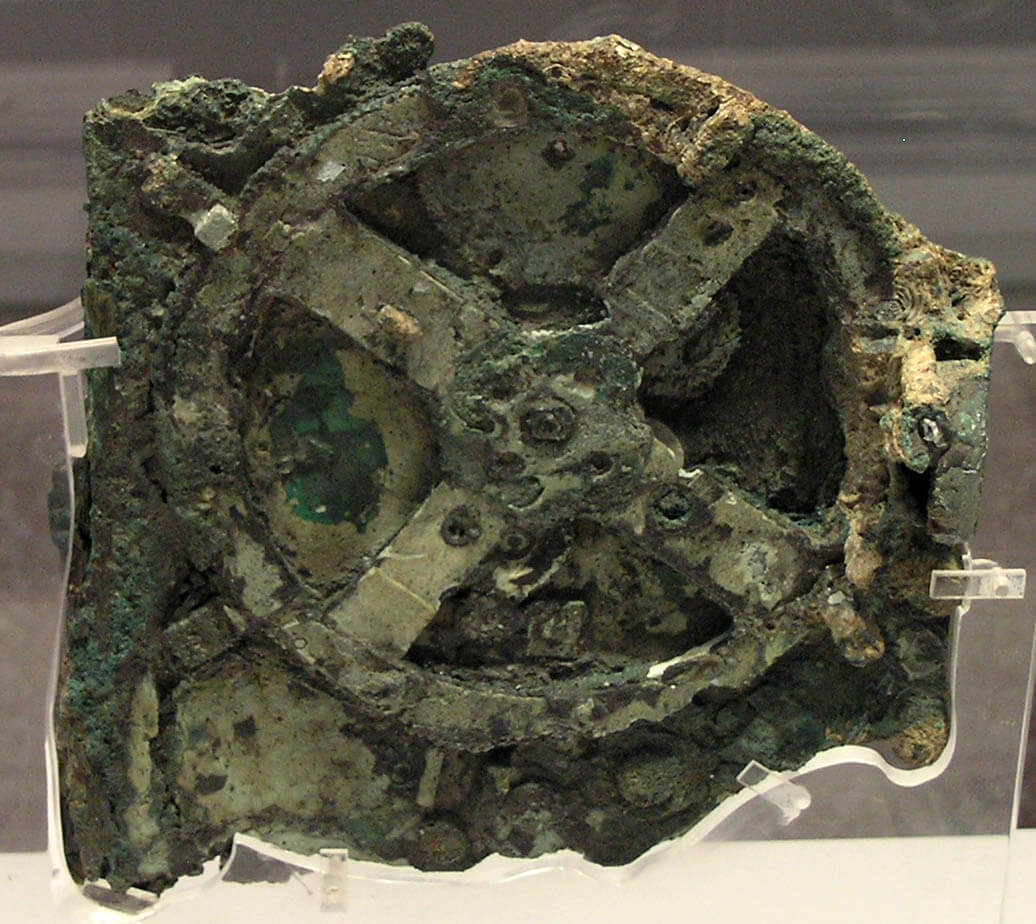
The Antikythera Mechanism: The World’s First Computer
Imagine holding the world’s first computer in the palm of your hand. A device so advanced for its time that it would take humankind over a thousand years to create anything even remotely similar. This is the Antikythera Mechanism, an ancient marvel that continues to captivate and inspire researchers, engineers, and dreamers alike.
Discovered in 1901, the Antikythera Mechanism was retrieved from the wreckage of a Roman ship that sank off the coast of the Greek island of Antikythera around 2000 years ago. The artifact is an intricate, hand-powered bronze device composed of over 30 gears and dials, many of which were painstakingly interlocked to perform complex calculations. It is often referred to as the world’s first analog computer and a testament to the ingenuity and sophistication of ancient Greek engineering.
The purpose of the Antikythera Mechanism was to track and predict celestial movements with astonishing precision. It could compute the positions of the sun, moon, and even the planets in relation to the Earth. The mechanism also incorporated a calendar, eclipse predictions, and even an Olympic games cycle. This multifunctional device was not only a scientific instrument but also a vital tool for navigation, timekeeping, and religious observance.
Deciphering the secrets of the Antikythera Mechanism has been a formidable challenge for researchers. Over the past century, scientists have employed advanced imaging techniques, computer simulations, and painstaking reconstructions to decode its functions and inner workings. The Antikythera Mechanism Research Project, an international collaboration of experts from various fields, has made significant progress in understanding this extraordinary device. Their findings have revealed the incredible accuracy and complexity of the mechanism, which was capable of predicting astronomical phenomena up to 20 years in advance.
The Antikythera Mechanism is a testimony to the power of human curiosity and innovation. Despite the lack of modern tools and resources, ancient Greek engineers crafted a device that could rival many modern-day scientific instruments. It serves as a reminder that progress and innovation are not limited to recent history, but are deeply ingrained in the human spirit.
This ancient treasure also underscores the value of interdisciplinary collaboration in solving complex problems. Researchers from various fields, such as archaeology, astronomy, and engineering, have come together to unravel the mysteries of the Antikythera Mechanism. As a result, we have gained invaluable insights into ancient technology, mathematics, and the history of science. In a world where specialization is often celebrated, the Antikythera Mechanism reminds us of the importance of a holistic approach in understanding and addressing the challenges we face.
The story of the Antikythera Mechanism also serves as a cautionary tale of lost knowledge. For centuries, the knowledge of this extraordinary device and the engineering expertise that created it were lost to time. It is a sobering reminder that progress can be fragile, and that the preservation and sharing of knowledge are crucial to the advancement of humanity.
As we marvel at the ingenuity of the Antikythera Mechanism, we are reminded that we stand on the shoulders of giants. The legacy of ancient Greek engineering continues to inspire modern-day scientists and engineers, pushing the boundaries of what is possible. This exceptional artifact teaches us that no matter the era or the tools at our disposal, human ingenuity and determination can defy the odds and create something truly extraordinary.
So, let the Antikythera Mechanism be a beacon of inspiration, a reminder of our rich and diverse history, and a testament to the unyielding potential of the human spirit. As we continue to reach for the stars, we pay homage to the ingenuity of those who came before us and laid the foundation for the technological wonders of today. The Antikythera Mechanism stands as an enduring symbol of the limitless possibilities that await us when we dare to dream, innovate, and collaborate.






